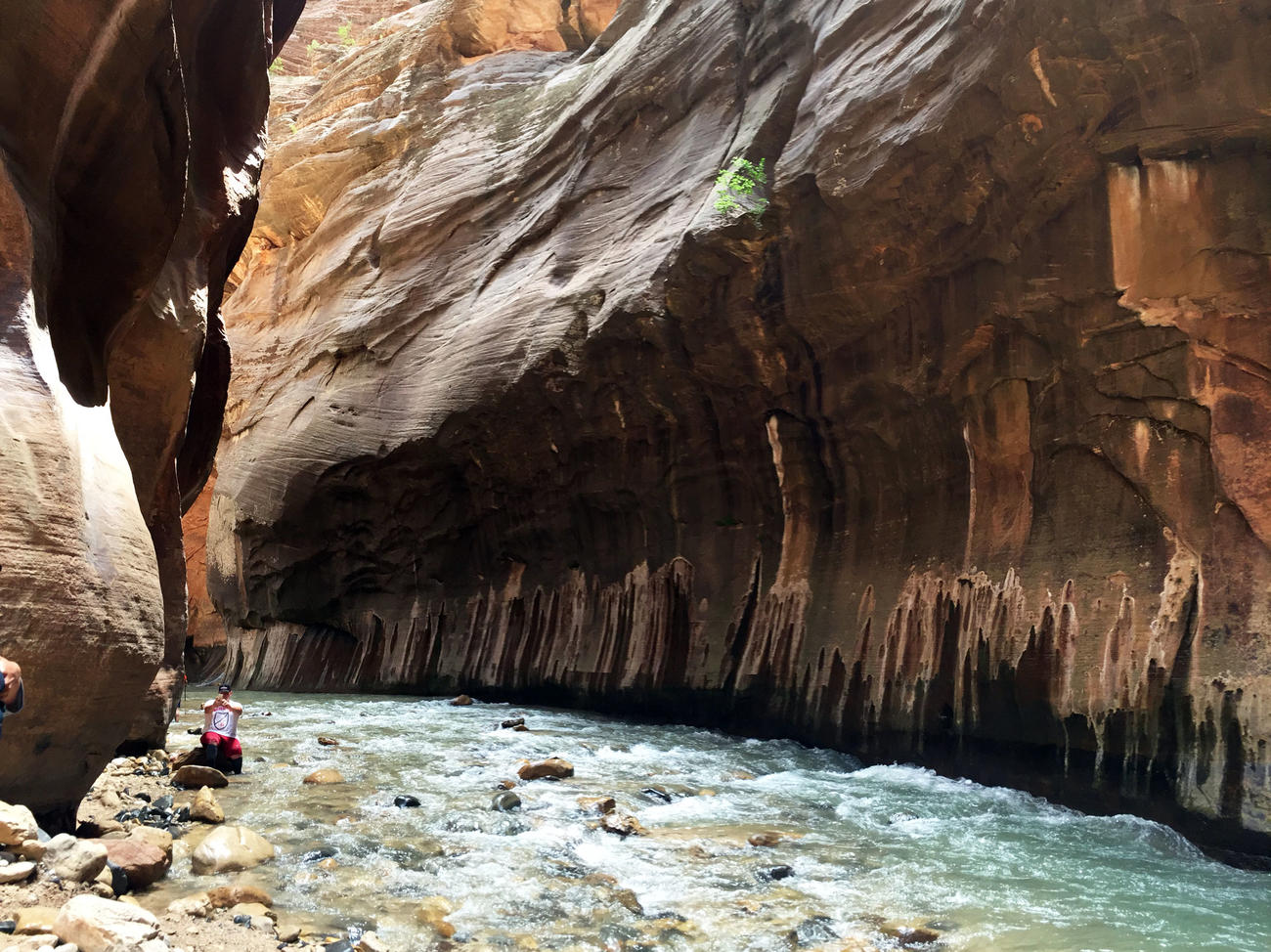
How to Prepare for a Hiking Trip to Zion’s Narrows
No trip to Zion National Park is complete without a view of the Narrows.

Between its colossal red rock and vast, varying terrain, Utah harbors some of the most humbling nature around. Zion National Park marks one of its most coveted destinations, garnering over 3.5 million visitors per year. While it offers a range of highlights—from the Emerald Pools to Weeping Rock—no trip is complete without the Narrows.
As the life source of Zion, the Virgin River has carved its way through the mountains, creating breathtaking caverns known as The Narrows. This accessible river invites travelers to hike upstream, navigating through shin-high to waist-deep depths depending on the season. When surrounded by hundreds of hikers, it’s easy to forget the Virgin River is just that—a forceful river. During my 6-mile, out-and-back trek, I saw plenty of unprepared explorers, so here’s a quick list of do’s and don’ts for those taking on this stunning experience.
Route Options:
- DO stop by the Visitor’s Center beforehand for flash flood advisories. Zion has seen its fair share, so make sure you’re hiking without one in the forecast.
- DO wear hiking boots, shorts, and bring layers. While Zion’s temperatures climb into the 100s during summer, majority of the hike is shaded, so a light jacket helps for those starting in the morning. Be sure to pack plenty of water, lunch, and sunscreen, as well.
- DO bring a hiking stick or, ideally, a pair of poles. When trekking in the late spring or early summer, you’re generally walking through knee-high waters and can easily find yourself waist-deep, so poles are incredibly helpful for river crossing.
- DO carry a zip lock bag for phones and electronic devices. It goes without saying you’ll be snapping photos left and right, so this little prep step ensures the camera comes back in one, water-free piece.
- DON’T try walking barefoot. I noticed one man attempt it and saw more ‘ouches’ than smiles.
- DO settle in one of the mild watering holes or low water sections. With the sun high and water cool, it’s easy to unwind along the sandy riverbanks, but stay mindful of the current.
- DON’T let little ones play in swift currents. As we were trekking back, a carefree kid was splashing about, lost his footing in higher waters and would’ve kept flowing down the river if my hiking partner hadn’t caught him. Keep kids upstream when playing to ensure they have a human safety net before heading downstream.
